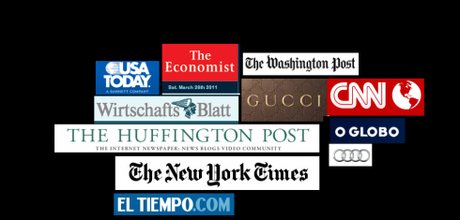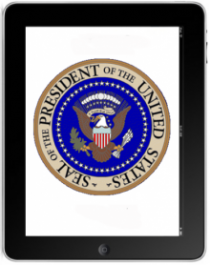TAKEAWAY: In a multi platform media world, it is all about extending the brand, giving it longer digital legs. Now a Harvard Business School study reinforces what we knew: we have preconceived ideas about the performance of our favorite brands. Message: don’t disappoint.


A casual dinner conversation with my long time friend, Dr. Hans Gasser, publisher and general manager of the Austrian financial daily, Wirtschafts Blatt, CEO of WirtschaftsBlatt also President of the Austrian Newspaper Assiciation turned to what is important for us in the media business today.
It is all about the brand, Dr. Gasser told me without hesitation.
“Once we lose our brand association, when what the brand stands for, which in the case of the Wirtschafts Blatt is credibility, authority, seriousness, then it is all gone.“
We all agree with that statement, and now, a Harvard study reminds us of how brand creates deep rooted perceptions that the audience uses to gauge quality. Regardless of what the actual product may be like, readers come to the material with a preconceived idea of what the brand stands for.
Dr. Gasser is right: we can’t disappoint, because regardless of how strong a brand is, smart users are going to realize that perhaps “the brand” may be slipping or lowering the bar.
But let’s turn our attention to the Harvard study:
In an International Herald Tribune
%0A">
%0A">
%0A" title="column">columnthe writer refers to a still unpublished research at the Harvard Business School by Bharat Anand, the professor at Harvard, and Alexsander Rosinski, a former visiting researcher there.
In their study, the authors took a story about Greek public finances that appeared online on The Huffington Post and showed it to a test group of 700 readers in three forms: as an unlabeled piece published online, as an online piece published by The Huffington Post and as an online piece published by The Economist.
You probably guessed the results by now: When users believed they were reading an Economist story, the respondents rated its quality at 6.9 on a scale of 10; when the same piece was attributed to The Huffington Post, readers gave it a score of 6.1; and when it had no label at all, it scored just 5.4.
No surprises here
This is probably why I spend so much of my time, with whichever project, dealing with how to treat “the brand”. This week alone, I would say that I have spent more than 30% of my time in Sweden, Finland and Austria, discussing the specific topic of logo placement, brand enhancement, and, in the case of the iPad development for titles in these countries, what I refer to as giving your brand longer legs.
Indeed, this is what the iPad can do so well, to extend that brand.
So people love you, believe you, swear by you and know that your publication is the one to trust with a story, with ethical journalism, with accuracy beyond question, then how can all that good perceptional stuff transfer into your next venture.
When Martha Stewart, for example, decides to do an app devoted to her cookie recipes, she is utilizing the tablet to “focus”——very important point to remember—-but, at the same time, extending her brand. If it is Martha Stewart, it must be good recipes, delicious cookies, easy to prepare, for the ordinary chef and not the gourmet specialist. That is what we associate with Martha Stewart.
When Oprah’s app shows us a pop up sequence on how to organize our lives——starting with the shoes in the closet and all the way down to the messy garage—-we know that the Oprah brand is there: not just clearing out your shoe closet, but engaging in the Oprah mantra—-her brand—-of helping to make you a better you.
Martha, Oprah, The New York Times, The Wall Street Journal, we trust these guys. We carry the banners of these brands in a high place, with even higher esteem.
Taking the good brand across platforms is one of the challenges for all of us today. But it should not be difficult.
The brand is a visual, emotional, mental connection to a product; it can assume different roles in different platforms.
With today’s tablets, brand exposure has never had it so much better.
Start with that door screen where the brand enters stage center first. Don’t let it leave the stage throughout the entire performance.
Dr. Gasser has the right idea, and he has spent a long career enhancing and protecting brands, and I have had the honor of accompanying him in those pursuits at projects like Kleine Zeitung (Austria), Sudkurier (Germany), TZ (Germany) , 24 Sata (Croatia) and currently with Wirtschafts Blatt (Austria).
Now a Harvard study reminds us how important brand is to the present and future of a title, and how it resonates with users.
And, speaking of brands…..

What happens when the Apple brand combines with the White House brand (one of the most powerful in the world)?
Read here: President Obama has an iPad. Need we say more? But, is it the iPad or the iPad2? Maybe his is called simply iPadONE.
http://tech.fortune.cnn.com/2011/03/28/barack-obama-has-an-ipad/?source=yahoo_quote
Of interest
The best Children’s Book on the Ipad
http://gadgetwise.blogs.nytimes.com/2011/03/28/the-best-childrens-books-on-the-ipad/?partner=yahoofinance
TheMarioBlog post #741

